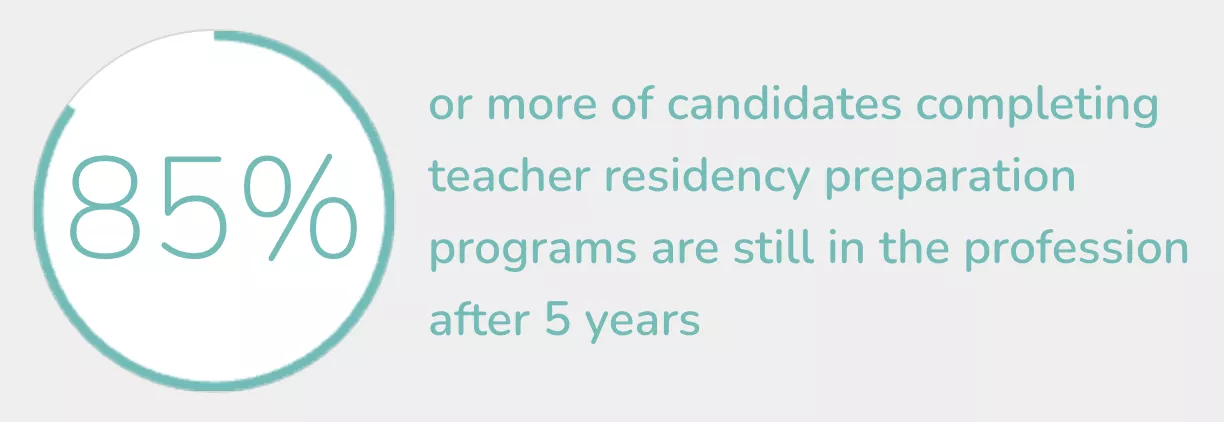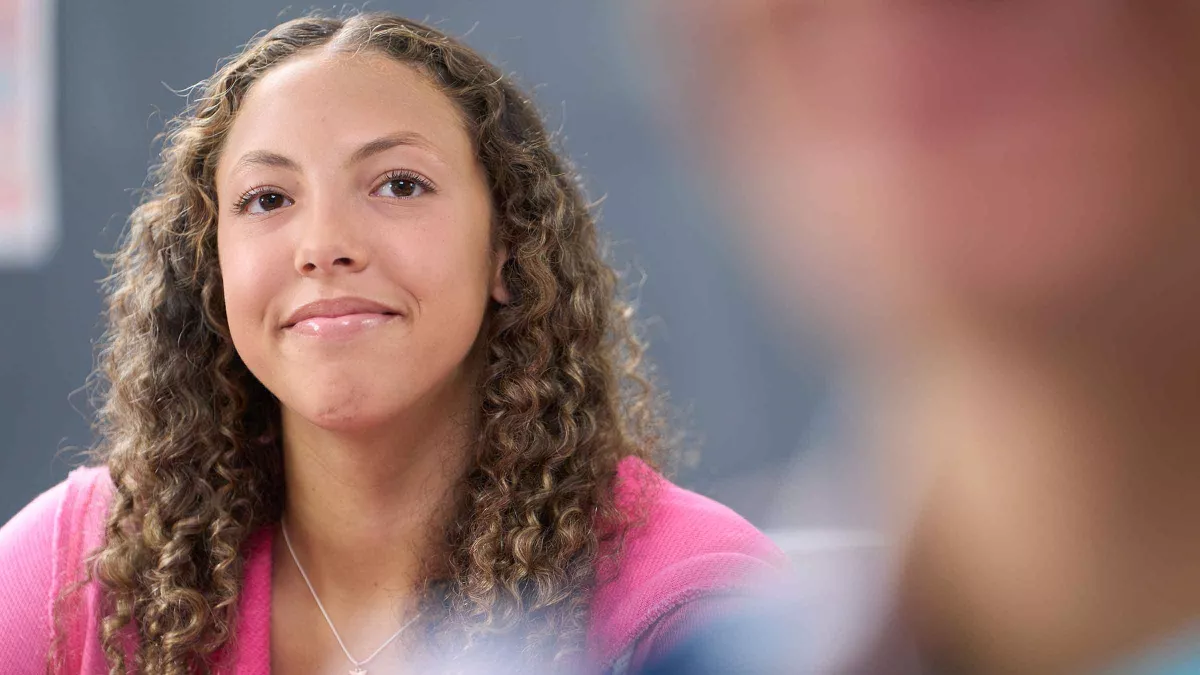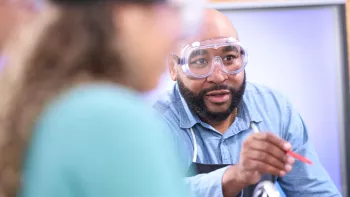How we define 'Aspiring Teachers'
Vision
TPPs have successfully undergone national review by the Council for Accreditation of Educator Preparation (CAEP).
Standards are established by the profession and emerge from the culture and design principles described below.
Candidates are selected from a competitive pool of applicants and possess both academic potential and the personal disposition that will contribute to a successful career and lifelong commitment to learning. Those selected reflect the diversity of our larger society.
TPPs help candidates successfully demonstrate their academic proficiency, particularly in areas in which they plan to teach. Even if opportunity gaps resulted in fewer experiences for some candidates, the TPP helps them acquire needed knowledge and skills in ways that model culturally responsive teaching and project-based learning for deep understanding.
Candidates engage in experiences that deepen understanding of how race, culture, poverty, and other factors impact students’ needs and their own perceptions and beliefs. They apply their understanding through culturally responsive teaching in their field experiences and clinical practice.
Candidates deepen their awareness of bias, both systemic and that which results from their own life experiences. Through collaboration with their mentor and deep personal reflection, they take steps to mitigate personal bias and to eradicate inequities within the system.
Candidates’ field placements provide a full range of experiences in meeting the needs of diverse learners. Coursework is infused with ongoing field experiences to make real-world connections to theory and provide opportunities to practice skills in context. Candidates participate in a full year of clinical practice modeled after the design principles identified in Teacher Residencies (2014) to develop a foundation of required teaching skills.
Candidates receive financial support. Grants, stipends, or salaries during clinical residency mitigate the cost of pursuing a career that has not yet matched the earning level of other careers with comparable requirements and responsibilities.
PreK-12 teachers and schools are full partners with TPPs in developing, implementing, evaluating, and improving their programs. PreK-12 faculty are integral to teaching TPP courses and developing the theoretical framework adopted by the TPP. PreK-12 teachers are well versed in the TPP curriculum, assessments, and philosophical beliefs. Their knowledge of the TPP is a resource in working with candidates.
PreK-12 faculty who serve as “cooperating teachers” skillfully demonstrate accomplished practice and are carefully matched with candidates. They participate in ongoing professional development to enhance their skills as teachers and as mentors of future teachers. They model a commitment to continuous learning that strengthens professional practice and deepens their understanding of self, along with the culture and backgrounds of their students, colleagues, and communities. They demonstrate a commitment to their students, their school, and their profession as they actively improve the quality of the next generation of professionals.
TPP faculty have current classroom experience, model outstanding practice in teaching and learning, and engage students in the use of technology to enhance learning. TPP faculty also model the commitment to lifelong learning, deeper understanding of pedagogy and culture, and contribute to the growth of the candidates and in-service practitioners they teach.
NEA Student Program chapters collaborate with TPP faculty and PreK-12 schools to offer activities to enhance candidates’ experiences and strengthen performance.
Candidates begin to experience leadership and professional responsibility through involvement with the Student Program. Student Program chapters provide a significant opportunity to extend candidates’ community connections and deepen cultural understanding through service and learning projects.
Prior to employment, candidates earn a license to practice based on a performance-based assessment of the essential knowledge, skills, and dispositions identified by the profession. As they begin their career, there is a seamless connection of professional support from clinical practice to mentoring/induction.
The Current Landscape
Only a few decades ago, teacher preparation almost always included a core of academic coursework linked in some way to subjects the candidate aspired to teach, followed by two or three semesters of education and pedagogy classes, then a semester of student teaching. Student teaching placements were typically based on geographical convenience, comfort level of the candidate, and the PreK-12 school’s selection of cooperating teachers.
While the majority of programs continue with a somewhat improved version of this model, greater change is definitely in the works.
Teacher residency programs are emerging as a model to significantly improve the readiness of candidates when entering the profession.
Critiques of traditional TPP quality, growing numbers of vacancies in hard-to-staff positions, and an overall shortage of candidates entering the teaching field all contribute to a rapidly changing landscape of routes to professional practice.
TPPs now range from “shortcut” programs consisting of a few weeks of training followed by employment (usually working with a mentor), to residency programs offering pedagogy coursework and a full year of clinical practice alongside a qualified cooperating teacher.

Additional factors:
-
Teacher residency programs are emerging as a model to significantly improve the readiness of candidates when entering the profession as a teacher of record.
-
Retention of candidates who complete a residency program is generally far higher than for other programs — as high as 85-90 percent.
-
In an effort to “raise the bar” for teacher quality, there have been calls for increased academic admission standards for candidates (e.g., the original CAEP standard 3.2) with potentially negative impacts on candidate populations who experienced opportunity gaps in their own PreK-12 experience.
-
The diversity of candidates entering the teaching profession has remained unchanged over the last 20 years.
-
Almost 10 percent of teacher candidates completing programs since 2000 are from non–higher education programs.
-
Programs such as Teach for America continue to offer a semester of preparation (possibly in the summer) prior to becoming a teacher of record supported by a mentor.
10% of teacher candidates completing programs since 2000 are from non–higher education programs.
Teachers with alternate route certification have significantly higher turnover rates than those from traditional route or residency programs .
Shortcut preparation programs may address vacancies, but academic performance of PreK-12 students in these teachers’ classrooms is notably lower and teacher retention is worse than both traditional routes or residencies.
With more instruction in pedagogy and extensive clinical practice, candidates are more likely to stay in teaching and achieve better learning outcomes.
The number of year-long programs akin to residencies is increasing, replacing traditional field experiences.
Residencies currently serve as a way to increase the diversity of candidates entering the profession in some settings.
Changes from the transition from No Child Left Behind (NCLB) to Every Student Succeeds Act (ESSA) could ease high-stakes testing pressures on PreK-12 schools, allowing increased collaboration with TPPs and future teacher candidates. State statutes and policies may still interfere, however, with the new flexibility.
ESSA provides specific opportunities to create Teacher Academies, built on extensive clinical practice, with potential for federal dollars to assist as programs are implemented.
Transforming the Landscape
Passion for Learning
TPP faculty and cooperating teachers must nurture and support the enthusiasm of candidates, model a spirit of continuous growth, and show how theory and practice continue to be interwoven in their instructional decision making.
Candidates engage in reflection on practice. Coaching and feedback increases their understanding and fosters their ability to reflect on practice. Candidates are encouraged to observe their cooperating teacher and other experienced faculty, then to participate in follow-up discussions, hearing the reflections of the experienced colleague.
Candidates are recruited intentionally to enrich the diversity of the teaching profession.
TPP faculty use opportunities in PreK-12 schools to maintain skills, to model teaching for candidates, and to demonstrate their own commitment to lifelong learning.
The TPP values faculty who work to support candidate learning by recognizing supervision and other work in PreK-12 schools as criteria for determining tenure and promotion.
TPP faculty and practicing PreK-12 educators who support developing aspiring educators model a deep appreciation for and valuing of the family and cultural background of each student and help aspiring educators develop a repertoire of culturally responsive practices and positive classroom management strategies.
Assessment for Excellence
The various models of assessments candidates experience in their TPP help them learn and grow, and guide their own use of assessment instruments.
Before receiving an initial license to become a teacher of record, a candidate’s professional readiness is determined by demonstrating mastery of the curriculum/content they will teach and through a performance assessment of teaching aligned with the knowledge, skills, and dispositions established by the profession.
Culture of Collaboration
PreK-12 faculty, schools, districts, and TPPs collaboratively design, implement, evaluate, and improve all aspects of their programs (coursework, field experiences, clinical practice, assessment, theoretical framework, etc.) to prepare teachers. As a result, PreK-12 faculty are well prepared to build on candidates’ previous experiences when they work with candidates during field experience/clinical practice. Cooperating teachers are carefully matched with candidates through collaboration between PreK-12 schools and TPPs.
Candidates experience norms of collaboration in schools both through joining in school-based professional learning communities and as cooperating teachers and other faculty engage in peer coaching and collegial observations of others’ teaching.
Aspiring teachers develop skills to collaborate with families and to tap community resources to improve student learning and to enhance student opportunities for authentic work.
Authentic Autonomy
During preparation, candidates are afforded options for some of their coursework and for learning/project options within courses. Clinical practice helps candidates develop knowledge and skills to exercise autonomy in designing culturally responsive lessons that meet individual students’ needs. Candidates also learn to provide their students with autonomy in selecting authentic learning experiences they use to demonstrate mastery.
Worth of Persons and Communities
Candidates are recruited intentionally to enrich the diversity of the teaching profession. All candidates, regardless of background, are afforded learning experiences that meet their individual academic, social, and affective needs in a manner that models the dignity and respect with which their future students should be treated. Candidates are provided a supportive environment in which to gain greater personal awareness and understanding of cultural, economic, and other factors that have impacted them. Candidates grow in their appreciation of the rich diversity in their schools and classrooms even as they develop the skills to respond appropriately to challenges and opportunities that come with diversity and inclusion.
Communities and districts collaboratively provide intentional and ongoing support and a safe environment for the academic, cultural, and emotional development/needs of candidates and emerging teachers. Communities support the growth of educators’ cultural understanding while also valuing the culture and heritage each educator contributes to the school.



